Two popular and environmentally-friendly options often used in furniture and decor are water hyacinth and seagrass. How Different Are Water Hyacinth vs Seagrass? These natural materials not only add a touch of eco-friendliness to your design but also bring unique textures and visual appeal.
Contents
1. Water Hyacinth vs Seagrass
Seagrass boasts a smaller diameter, lending it a rustic appearance with a subtle greenish undertone that matures into khaki or beige hues over time. In contrast, water hyacinth stems are larger and feature a warm golden brown exterior, exuding a softer aesthetic. These differences in appearance result in unique tones and decor vibes.
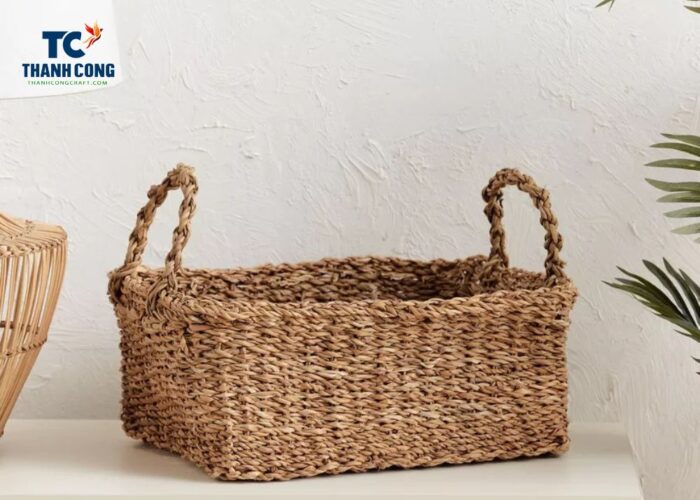
Both water hyacinth and seagrass are naturally biodegradable and non-toxic. They exhibit pliability, flexibility, and durability, making them ideal for weaving, although they lack the rigidity of bamboo and rattan. Proper drying is essential before commencing the weaving process in homeware production.
Neither of these materials is waterproof or weather-resistant, making wicker homewares suitable for indoor use only. Typically, the moisture content of seagrass and water hyacinth products ranges from 10% to 19%, unless specific moisture standards are provided by buyers.
- Color Fastness
Can products made from these materials be dyed or painted? The answer is yes, but there are differences to consider. Due to its softer texture, water hyacinth stems offer superior color fastness compared to seagrass fibers.
Seagrass possesses a natural oil surface that is somewhat shiny and smooth. This characteristic may result in uneven coloring and occasional discoloration (color fading) in dyed seagrass products. Furthermore, dark and bold dye colors tend to work better on seagrass than lighter shades.
- Material Costs
Material costs and quality can vary depending on specific regions and weaving styles. Apart from the material’s inherent characteristics, the cost of production methods plays a role in determining the final product prices.
Seagrass cultivation is widespread in the coastal provinces of Vietnam, benefiting from favorable climate conditions. Notably, the northern areas, especially Thanh Hoa and Thai Binh province, offer seagrass of superior quality at lower costs and higher production volumes.
In contrast, water hyacinth is a commonly found aquatic plant in southern Vietnam, thriving in water ponds and aquariums. This plant is known for delivering better quality and lower costs, particularly in the southern regions.
1.1 Water Hyacinth vs Seagrass Characteristics
- Seagrass:
Seagrass is a plant material that grows in brackish water areas. There are over 60 different seagrass species found globally.
It grows rapidly, forming dense underwater meadows that are vital to marine life. It particularly flourishes in muddy and sandy seabeds.
It’s harvested and processed to create various home decor products such as baskets, lamps, and other accessories.
- Water Hyacinth:
The key distinction between seagrass and water hyacinth is that water hyacinth stalks are thick and spongy, turning golden brown when dry, while seagrasses have flat, ribbon-like leaves that vary in color from green to brown.
Originates from tropical and subtropical regions around the world. It thrives in warmer waters and climates. Water hyacinth has broad, thick, and smooth leaves, often growing up to 1-2 meters above the water’s surface.
Due to its ability to proliferate in water bodies, it can become a nuisance on many waterways globally.
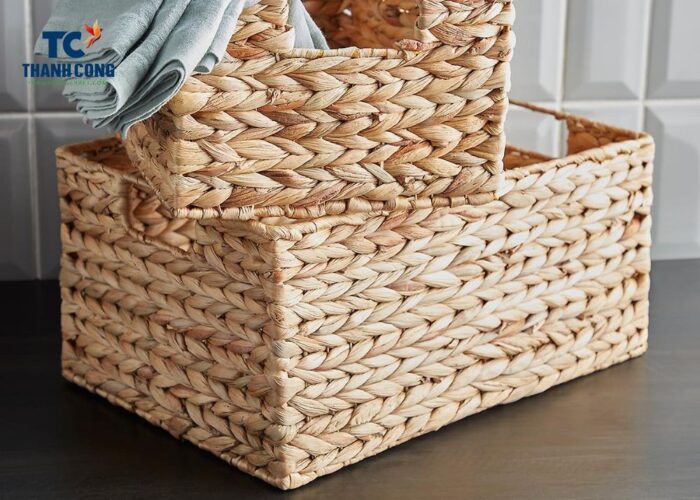
1.2 Water Hyacinth vs Seagrass in Weaving Furniture
Water hyacinth and seagrass are two natural materials that have gained immense popularity in the world of furniture weaving. These materials have unique qualities and characteristics that make them highly sought after for creating stunning and functional furniture pieces.
- Appearance:
Water Hyacinth: Water hyacinth has long, thick, and flexible stems with a glossy, green appearance. It is known for its natural sheen.
Seagrass: Seagrass typically has flat, ribbon-like leaves that can vary in color from green to brown, depending on the species.
- Strength and Durability:
Water Hyacinth: Water hyacinth is not as durable as seagrass and can be relatively fragile. It is more suitable for lighter weaving projects.
Seagrass: Seagrass is known for its strength and durability, making it a better choice for heavier or more rugged weaving applications.
- Texture:
Water Hyacinth: Water hyacinth has a smoother texture compared to seagrass, which can make it more comfortable for some weaving projects like furniture or baskets.
Seagrass: Seagrass has a slightly rougher texture due to the fibers in its leaves, which can be preferable for certain weaving styles and purposes.
- Color and Dyeing:
Water Hyacinth: Water hyacinth’s natural green color can be dyed to various shades, allowing for more color options in weaving projects.
Seagrass: Seagrass is typically used in its natural color, although it can be stained or dyed to some extent.
- Applications:
Water Hyacinth: Water hyacinth is often used for weaving smaller items such as placemats, coasters, small baskets, and decorative pieces.
Seagrass: Seagrass is commonly used for larger and more durable items such as furniture, floor mats, storage baskets, and even some outdoor applications.
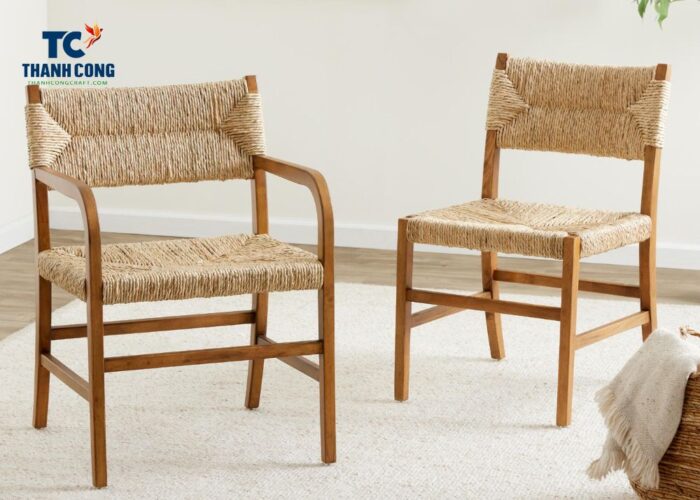
2. Water Hyacinth and Seagrass Pros and Cons
Water hyacinth and seagrass are two natural materials that have gained popularity in various applications, including furniture and home decor. Each material comes with its own set of advantages and disadvantages, making them suitable for different purposes. Let’s explore the pros and cons of water hyacinth and seagrass to help you make an informed decision when choosing between these materials.
Pros of Water Hyacinth and Seagrass:
- Is a fast-growing and renewable resource, making it an eco-friendly choice for furniture and decor.
- Light golden-brown color and intricate weaving patterns create a visually appealing and rustic look, adding warmth to your space.
- Water hyacinth and Seagrass furniture is lightweight and easy to move around, allowing for effortless rearrangement of your interior layout.
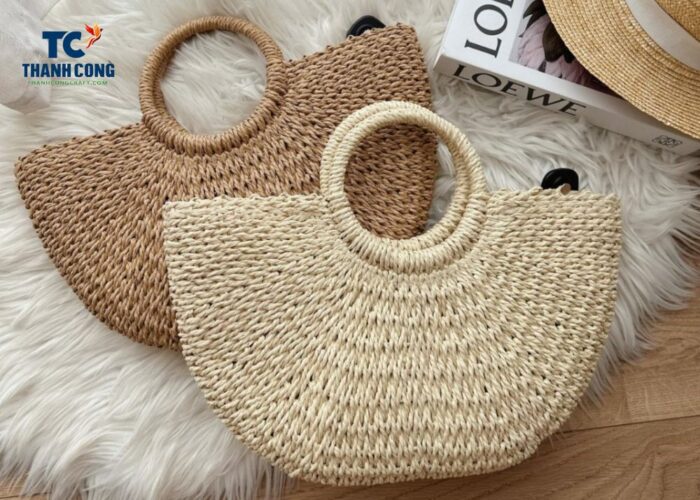
- The natural flexibility of water hyacinth and Seagrass allows for comfortable seating, and its breathable weave provides a cool and cozy sitting experience.
- Water hyacinth and Seagrass can be woven into a variety of furniture styles, from chairs and sofas to storage units and baskets.
Cons of Water Hyacinth and Seagrass:
- Water hyacinth and Seagrass sensitive to moisture and may degrade if exposed to excessive humidity or water. It’s best for indoor use only.
- Over time, water hyacinth and Seagrass furniture may experience color fading, especially when exposed to direct sunlight.
- Due to its vulnerability to moisture, water hyacinth and Seagrass is not suitable for outdoor furniture or spaces exposed to rain and humidity.
- In summary, both water hyacinth and seagrass have their own strengths and weaknesses. Your choice between these materials should depend on your specific needs, design preferences, and the intended use of the furniture or decor.
3. Water Hyacinth and Seagrass Application
Both of these materials are commonly used in weaving furniture. They are highly durable and sturdy, making interior products not only long-lasting but also exceptionally eye-catching.
- Storage Baskets: Hyacinth basket and Seagrass Baskets are woven into stylish and sturdy storage baskets. These baskets are perfect for organizing your home, from living rooms to bedrooms and beyond.
- Planters Baskets: Elevate your indoor and outdoor greenery with planters made from water hyacinth or seagrass. These baskets add a touch of natural elegance to your plants.
- Placemats: Enhance your dining experience with placemats crafted from these materials. They bring a rustic and eco-friendly charm to your table setting.
- Lamp Shades and Table Lamps: Illuminate your space with eco-conscious flair by choosing lampshades and table lamps made from water hyacinth or seagrass. They create warm, inviting lighting.
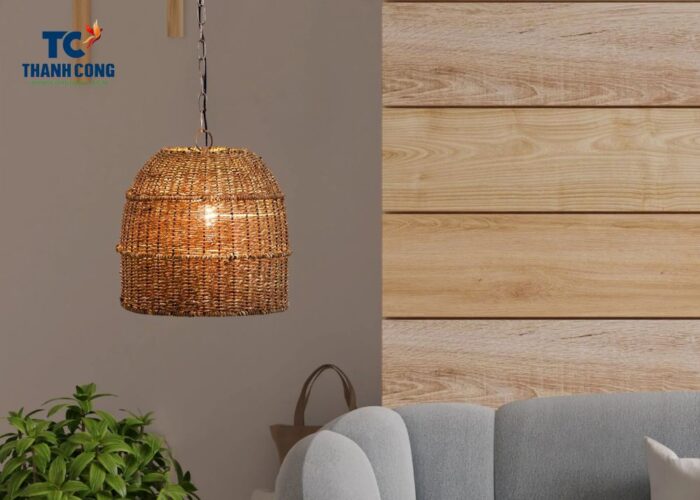
- Pet Accessories: Pamper your pets with beds, mats, and toy baskets woven from these natural materials. Not only are they comfortable for your furry friends, but they also add an earthy touch to your home.
- Chairs and Tables: Water hyacinth and seagrass are often used to create stylish chairs and tables. Their natural textures and durability make them excellent choices for both indoor and outdoor furniture.
- Handbags: Carry your essentials in eco-chic style with handbags made from water hyacinth or seagrass. These bags are not only fashionable but also environmentally conscious.
In conclusion, the comparison between Water Hyacinth and Seagrass reveals the unique qualities of each material, allowing you to make an informed choice for your home decor needs.
How different are Water Hyacinth vs Seagrass? They are indeed distinct in their growth, characteristics, and applications, but both contribute to sustainable and stylish home decor in their own special way. So, whether you opt for the airy elegance of Water Hyacinth or the coastal charm of Seagrass, you’re sure to enhance your home with natural beauty and eco-conscious design.
If you have any further questions, don’t hesitate to send thanhcongcraft an email us at info@thanhcongcraft.com or message us at WhatsApp: +84967485411. Hope to serve you soon! Best regard!












